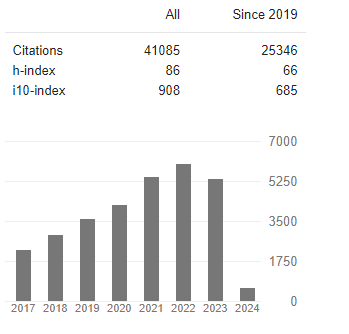Mechanistic and Statistical Analysis of Possible Defense Mechanisms for Probabilistic Failures in Robustness, Stability and Sustainability of Static and Dynamic Complex Networks
Abstract
Rakib Hassan Pran
Complex networks are ubiquitous even in the form of defense networks in many fields such as ecological immune systems, biological immune systems, brain networks, air defense systems, national security, cyber security, peace and conflict studies, and so on. In the real world, complex networks exist in both static and dynamic forms. By understanding probabilistic failures and their possible defense mechanisms in static and dynamic complex networks, scientists and researchers can make decisions in developing and implementing methodologies of many fields as we can say, from the fields of biology to fields of technology. In this research, static and dynamic scale-free and small world networks have been generated as complex networks with network generation algorithms. Besides that, probabilistic failures and their possible defense mechanisms have also been generated and designed for previously generated complex networks. On these generated probabilistic failures and their possible defense mechanism, several mechanistic and statistical analysis methods have been applied. To generate these static and dynamic complex networks and their probabilistic failures and possible defense mechanism, two modified network generation algorithms along with several network measurements algorithms have been implemented where parameters have been chosen to produce possible types of static and dynamic scale-free and small world networks, and their corresponding probabilistic failures and possible defense mechanisms. Besides analyzing probabilistic failures and possible defense mechanisms for generated complex networks; the robustness, stability and sustainability of those networks have been studied and analyzed for probabilistic failures and their possible defense mechanisms.




